32 tips for traveling with pets
Taking your pet on your travels can be life-enhancing – here are some tips for traveling with pets.
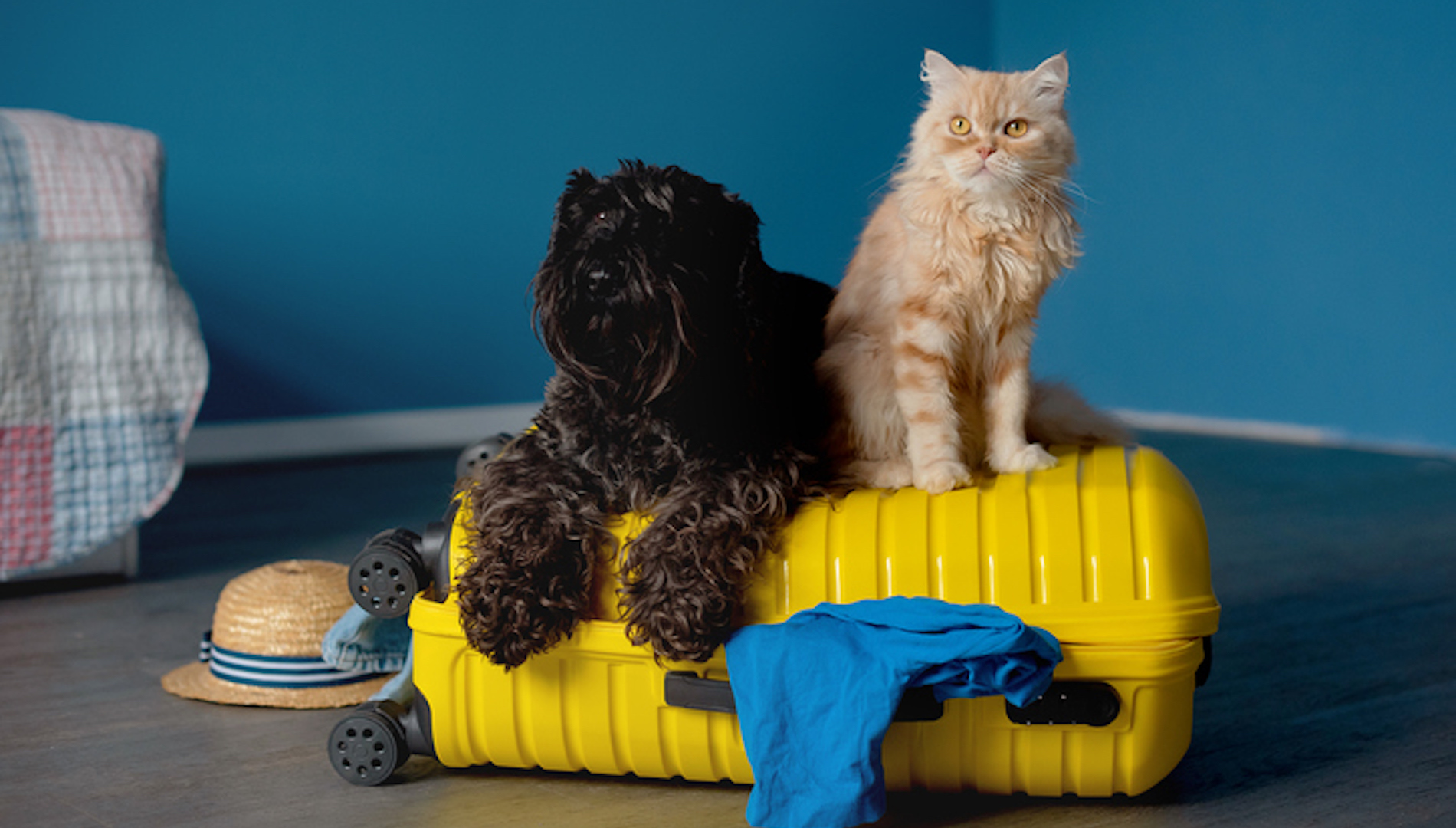
Traveling with pets can be both a joy and a nightmare. While it is wonderful to share our adventures with our loyal four-legged companions, there are a lot of things to organize before going on a trip. But don't feel overwhelmed we've rounded up some top tips for traveling with a pet.
Naturally, the logistics will depend on the pet. A small animal kept in a cage has different requirements than dogs and cats. Some pets, particularly cats, are true home-birds and may be happier left at home with someone booked in to look after them. The simplest choice is usually to book your pets into a boarding facility.
However, some of our pets just love to come with us wherever we go. The mere sight of a suitcase or mutterings about packing will send them into a depression. They may even try to get in the suitcase with some of their best dog toys to ensure they come too. This particularly applies to dogs, who long to be at the heart of the action, wherever that may take them. But everyone will enjoy the vacation all the more if you know how to travel with a dog.
Good preparation is key. If you have all the Is dotted and Ts crossed, you are set for a great adventure with your pet at your side. Let’s take a look at some of the considerations you need to make.
32 tips for traveling with pets
1. Visit the vet
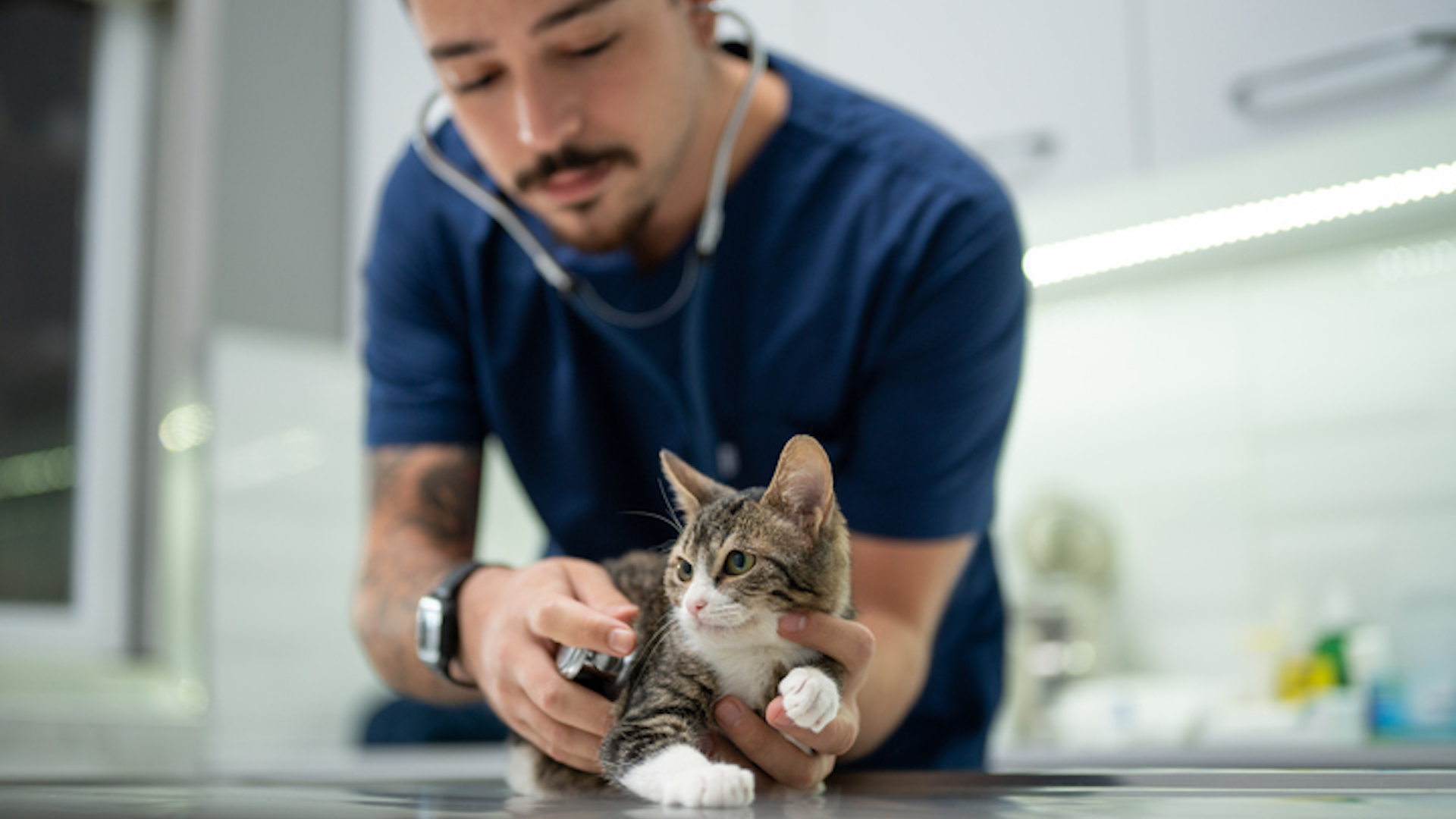
Schedule an appointment with your vet to make sure that your pet is in great shape before the trip, and up to date with all vaccinations. If your pet is on any regular medication, you’ll need to stock up with sufficient supplies.
Some airlines will require a current fit-to-fly health certificate, so find out if this is needed and book it before the veterinary check-up.
2. ID and microchip
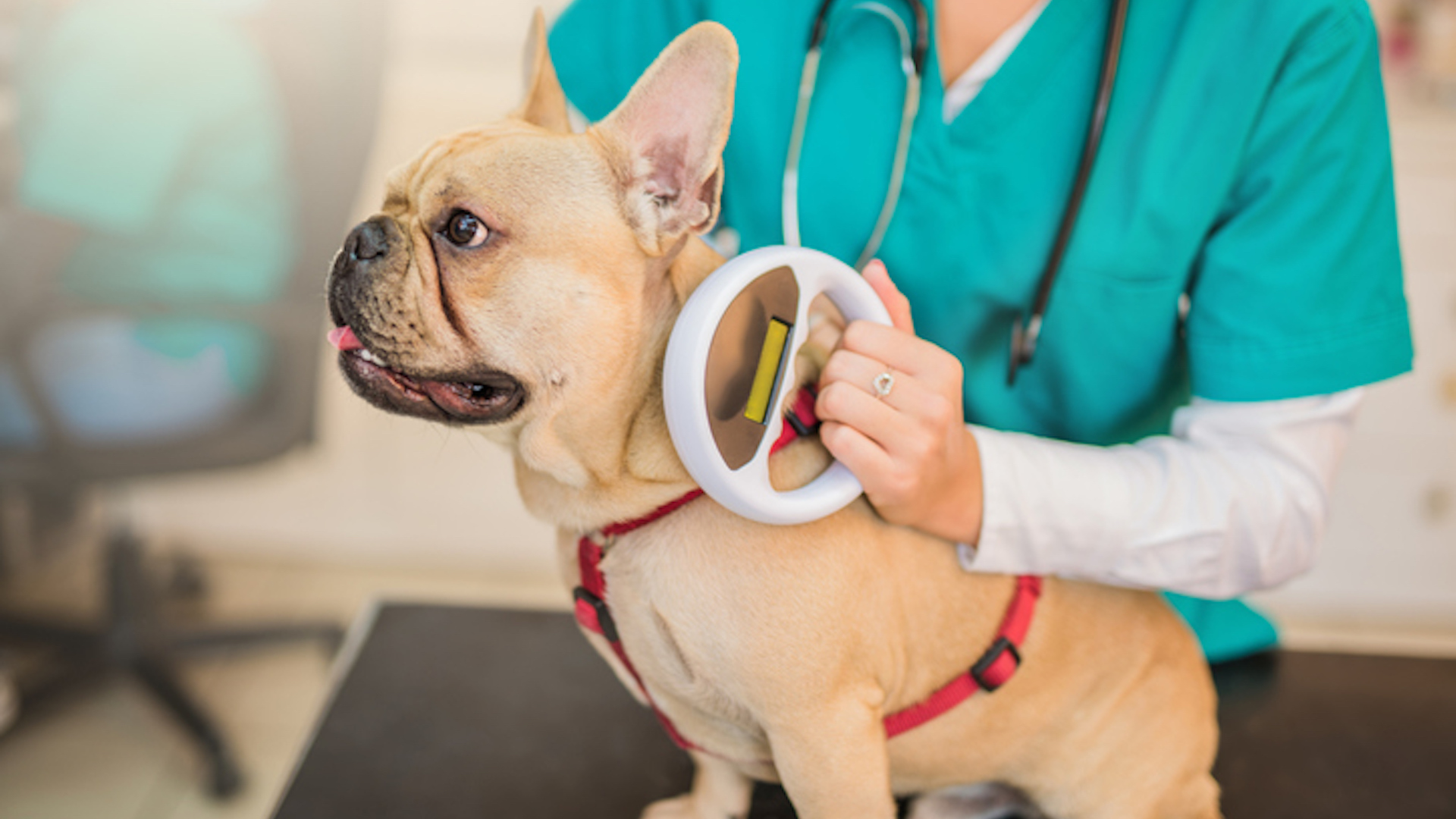
In the UK, since 2016 it has been a legal requirement that all dogs are microchipped. They should also wear a collar with identification details to enable their owner to be located if the dog is lost. Enforced microchipping will also come into force for British cats from July 2024.
Get the best advice, tips and top tech for your beloved Pets
In the US, microchipping is the law in certain states. While collars and tags are not a legal requirement, both forms of identification are highly recommended. This is particularly important given that you will be traveling your pet outside its familiar local area, in case it gets lost.
Take a current picture of your pet with you, so that you can show police and vets if you do lose them.
3. Research pet-friendly accommodation
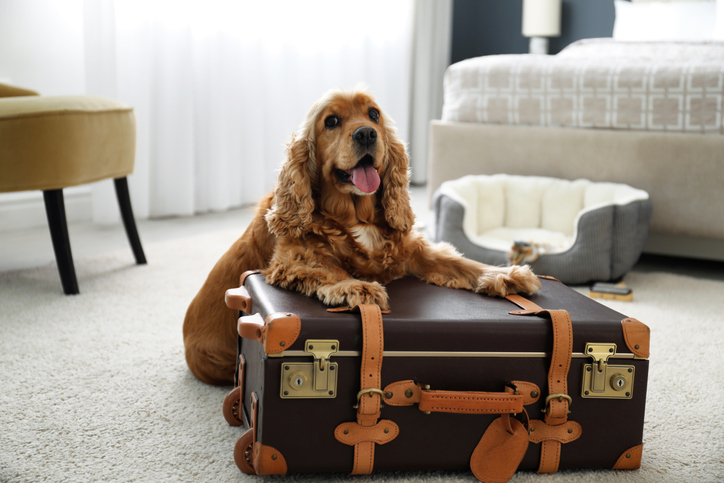
Not all hotels, BnBs, and apartments accept pets, so always check while planning your trip. Some accommodation providers charge an extra fee for pets because of the additional cleaning required.
There may be rules, such as that your pet is kept in a crate while you are not in the room; that they are not allowed on the furniture, and so on. Some may have restrictions on the size of the dog, or which type of pet you bring.
4. Pet carrier
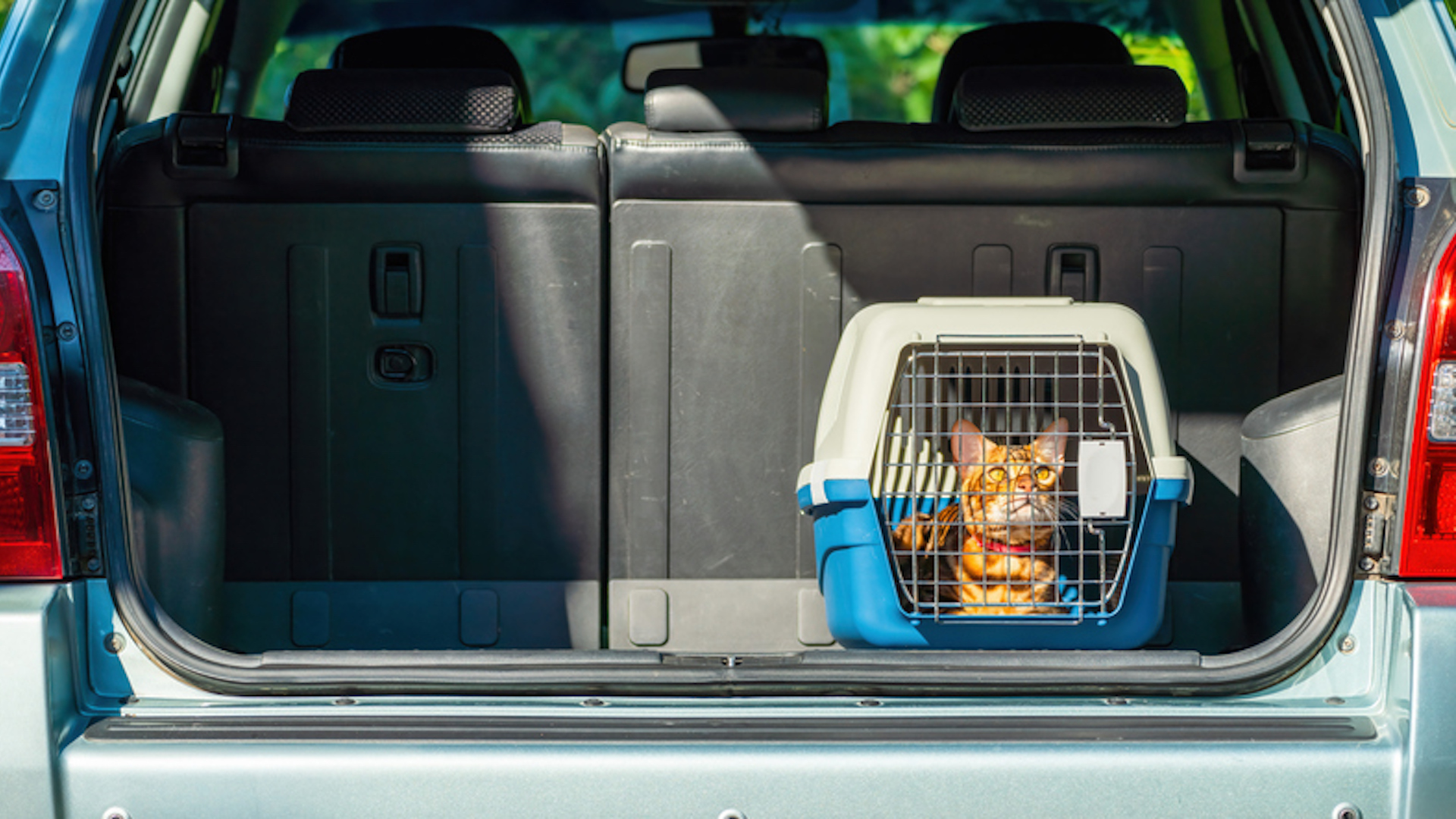
A pet carrier is the safest way to transport your pet, as well as giving them a secure haven to rest in during what can be a stressful time traveling. Don’t skimp on quality – your pet may be restricted to this crate for long periods during travel, so it should be sufficiently roomy, well-ventilated, and sturdy. Investing in one of the best cat carriers or the best dog crates is well worth it.
If you are taking your pet on an airplane, check that your crate complies with airline regulations.
5. Get them used to the carrier
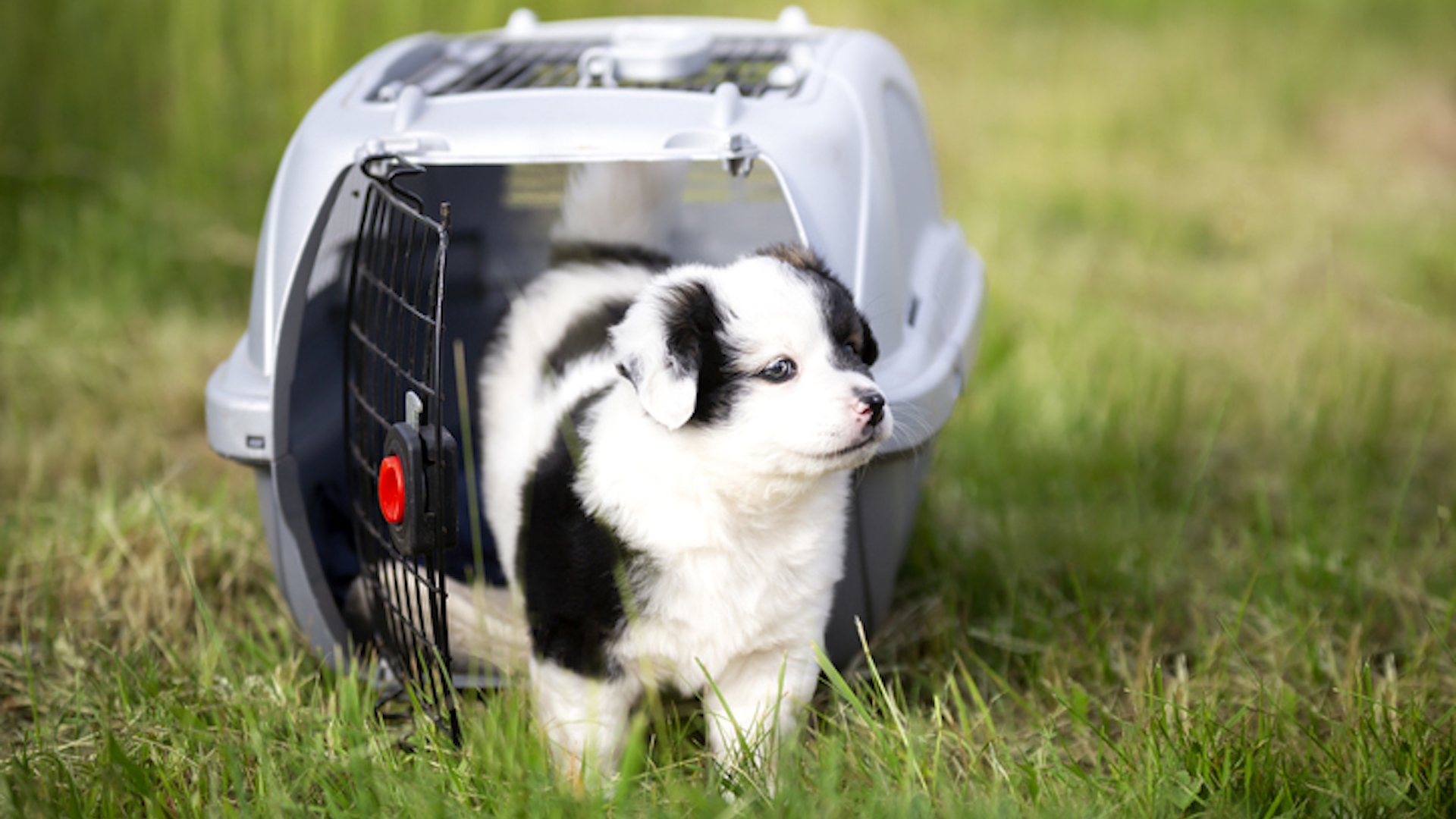
The first time that your pet uses his carrier should not be on the day of your trip. Buy the carrier well in advance and familiarize them gradually, making it a really inviting place with blankets, their favorite toys, and some of the best puppy treats. Leave it open the first few times you try, so that they don’t feel claustrophobic and can come and go as they please. Once they are relaxed and content inside, feeling like it is a good place, then you can shut the door and reward them.
6. Take familiar items

If your pet has never left home before they are likely to take some time to settle into their new surroundings. They will be pacified by your presence, but it will also help to take their blankets and any familiar toys as these will smell of home and provide comfort.
7. Practice car rides
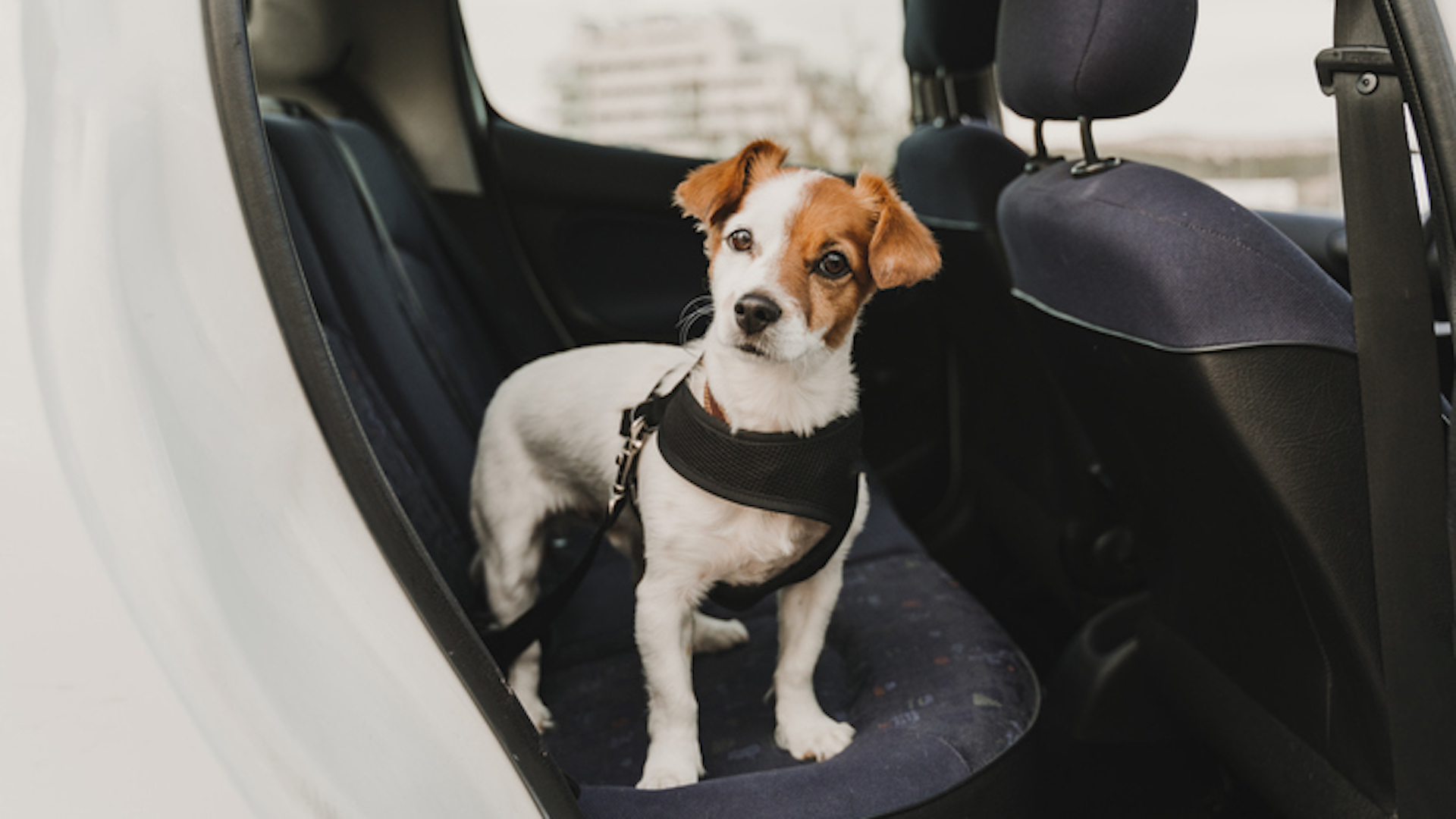
Owners vary on how often they take their pet in the car with them, but particularly for those who don’t travel often, it’s really important to familiarize them with the motion of traveling and the sensation of being in the car. Assuming you will be using a pet carrier, being comfortable in this needs to be well established before you go off on vacation so that jumping in the car for a trip feels like second nature – and a chance for an adventure with you.
Take them to places they will love, like one of the best dog walks in the US for a couple of hours’ walk, so they associate the car with good things.
8. Make the car secure and safe

You wouldn’t drive your child around without a seatbelt, and nor should you travel with your pet without appropriate restraints. A pet seatbelt/harness or a carrier is ideal, as is brushing up on how to secure a dog in a car.
Not only is it risky for your dog in case you have an accident or have to brake sharply, but it’s also dangerous to have a loose dog – especially one that doesn’t sit still – distracting the driver. So having them in the best dog car harness is the safest option for everyone.
9. Pack essentials
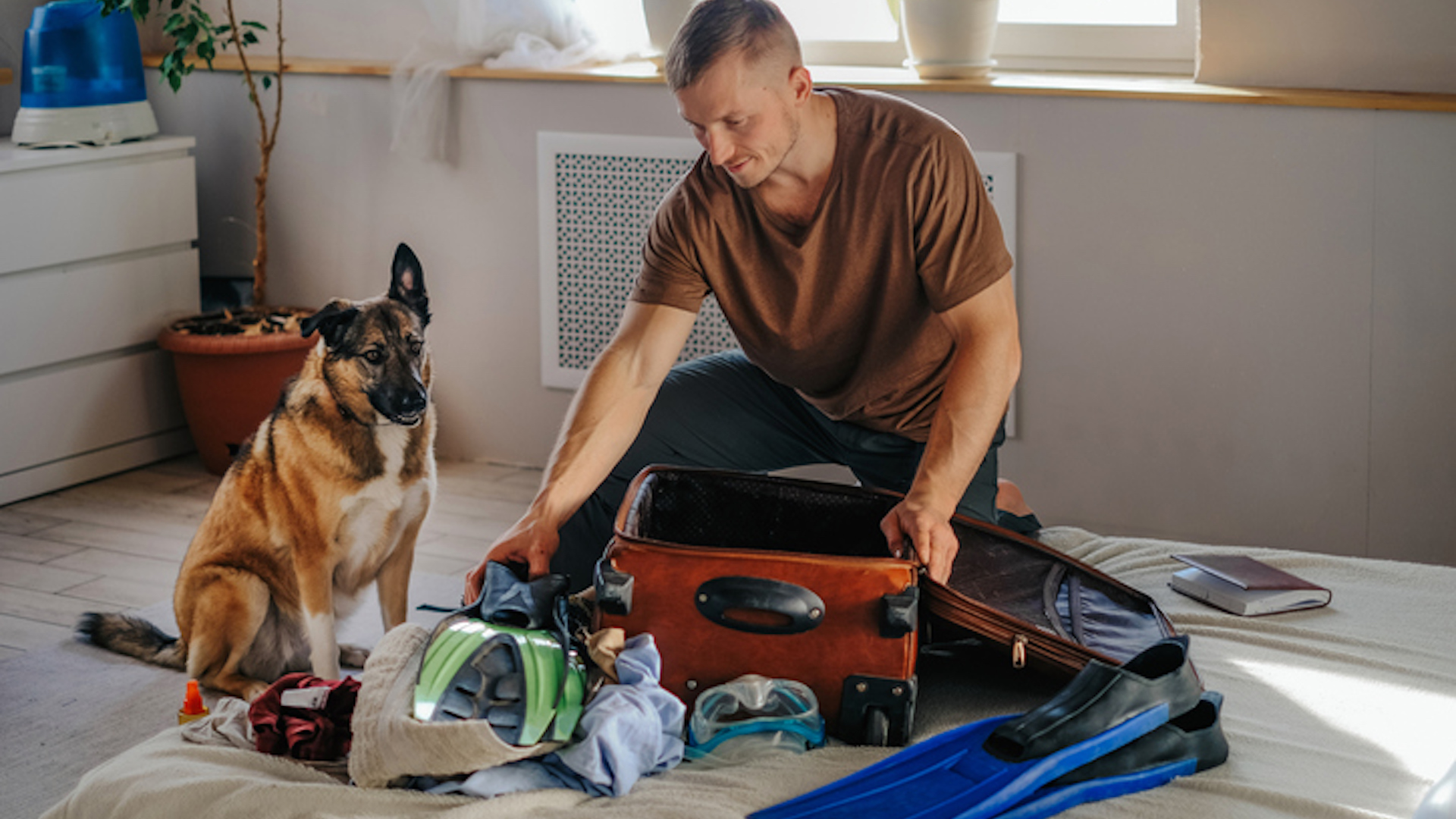
Depending on the length of your journey, it’s advisable to have a little travel bag with all your pet essentials for the duration. This will include water and a vessel for drinking out of, any medications, treats, and sufficient food for the journey. However, you should not feed much to pets either before or during the journey as it may make them uncomfortable or cause motion sickness.
Always pack a little extra of everything in case you suffer a breakdown or get caught in a traffic jam.
10. Assemble pet first-aid kit
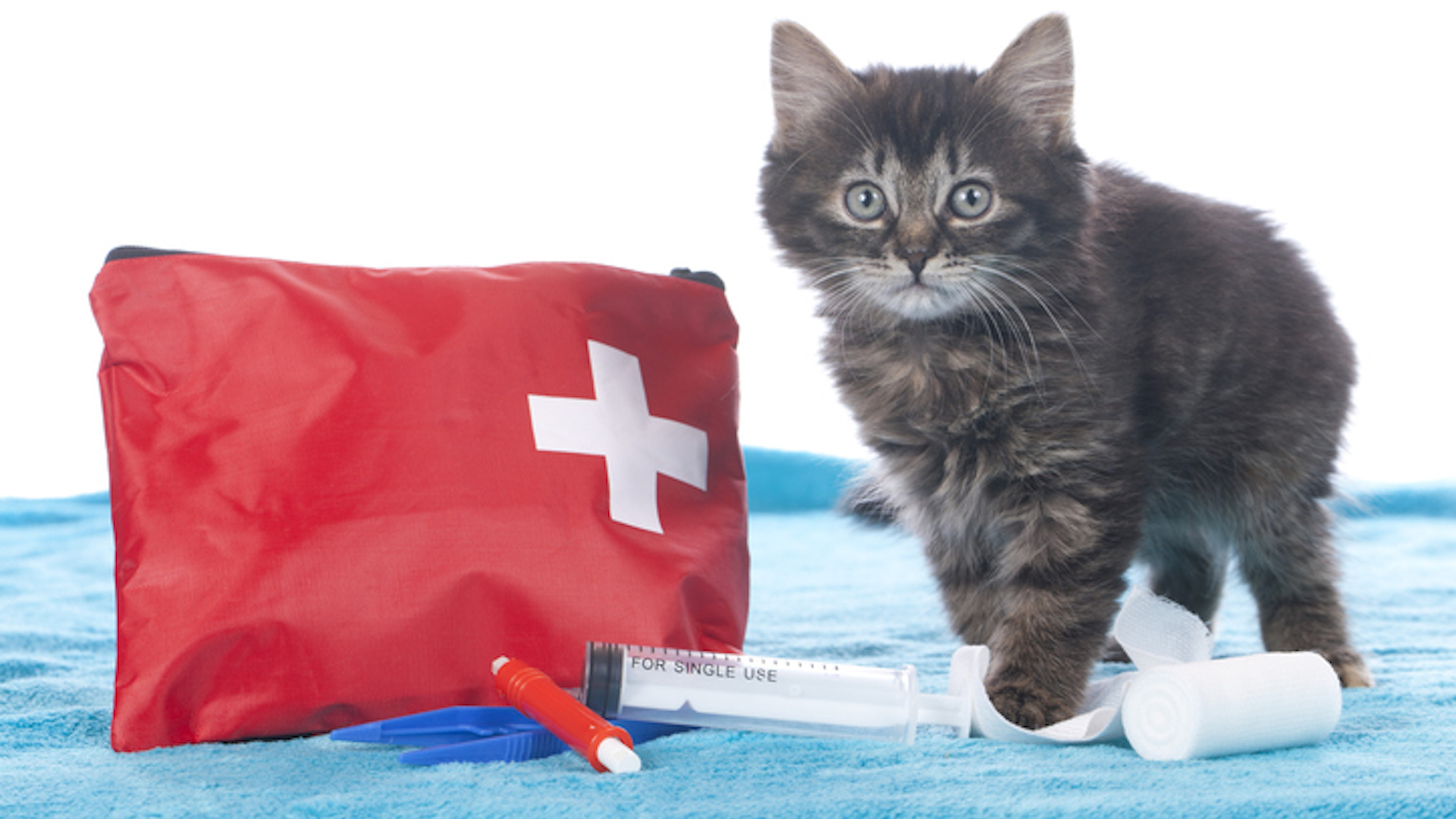
Pack a first-aid kit so that you can attend to any cuts and scrapes while you’re out and about. You can buy a ready-made kit with all the essentials, or assemble one yourself.
This should include items such as a tick remover, tweezers, saline and antiseptic solution, pet wrap, bandages, scissors, and an ice pack.
If your pet is on any regular medication, don’t forget to include a sufficient supply.
11. Check the weather forecast

Are you ready for the weather at your destination? Check the weather forecast and pack accordingly.
If it‘s going to be wet, you may need to take extra towels (the hotel won’t thank you for drying a muddy dog with theirs), a waterproof coat, and a drying robe. Snowy weather might necessitate a warm coat if they are not used to sub-zero temperatures unless you have one of the best dog breeds for cold climates.
Hot weather should make you assess your plans. If you had long walks scheduled in the middle of the day, you may want to move these to dawn and dusk when it’s cooler. Take travel doggy water bottles so that your dog can drink while out and about. You can also take a parasol for shade, and a cooling jacket or mat for pets. Dogs may also benefit from shoes to prevent them from burning their pads on the pavement.
Remember that if the climate at your destination is very different from what your dog or pet is used to, they will need time to acclimatize and should not be thrown into a busy program of activities while they settle in.
12. Plan rest breaks
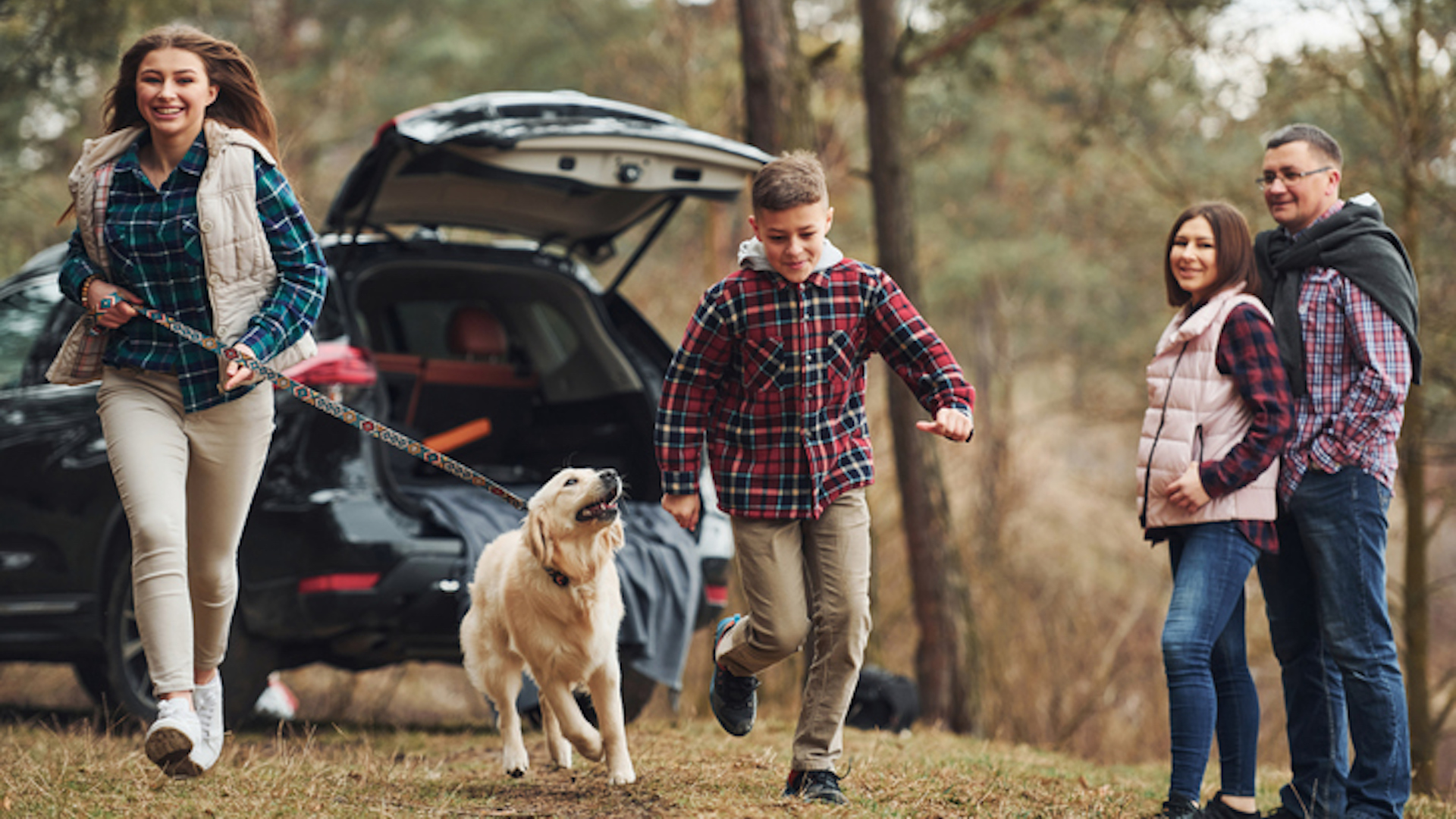
If you have a long drive, plan rest breaks where you can stop, let your pet out of its carrier, have a drink, stretch, and go to the bathroom.
Vets typically advise that any trip over four hours should incorporate rest breaks every two to four hours for 15 minutes or so. Younger animals may need to stop more frequently.
Let’s face it, you’ll probably want to stop too!
13. Research vets at your destination and along the route

Always prepare for the worst and hope for the best. By doing some research to find out contact details, including out-of-hours, for the nearest recommended vets both at your destination and along the route, you will have peace of mind that if your pet should suffer an injury or illness while you’re on vacation, you know exactly whom to call to get the best possible help.
Chances are you won’t need it, but not being prepared will add another layer of stress you don’t need if there is an emergency.
You can search a list of veterinary and pet emergency hospitals in the US at the American Animal Hospital Association.
14. Know pet policies on your chosen transport
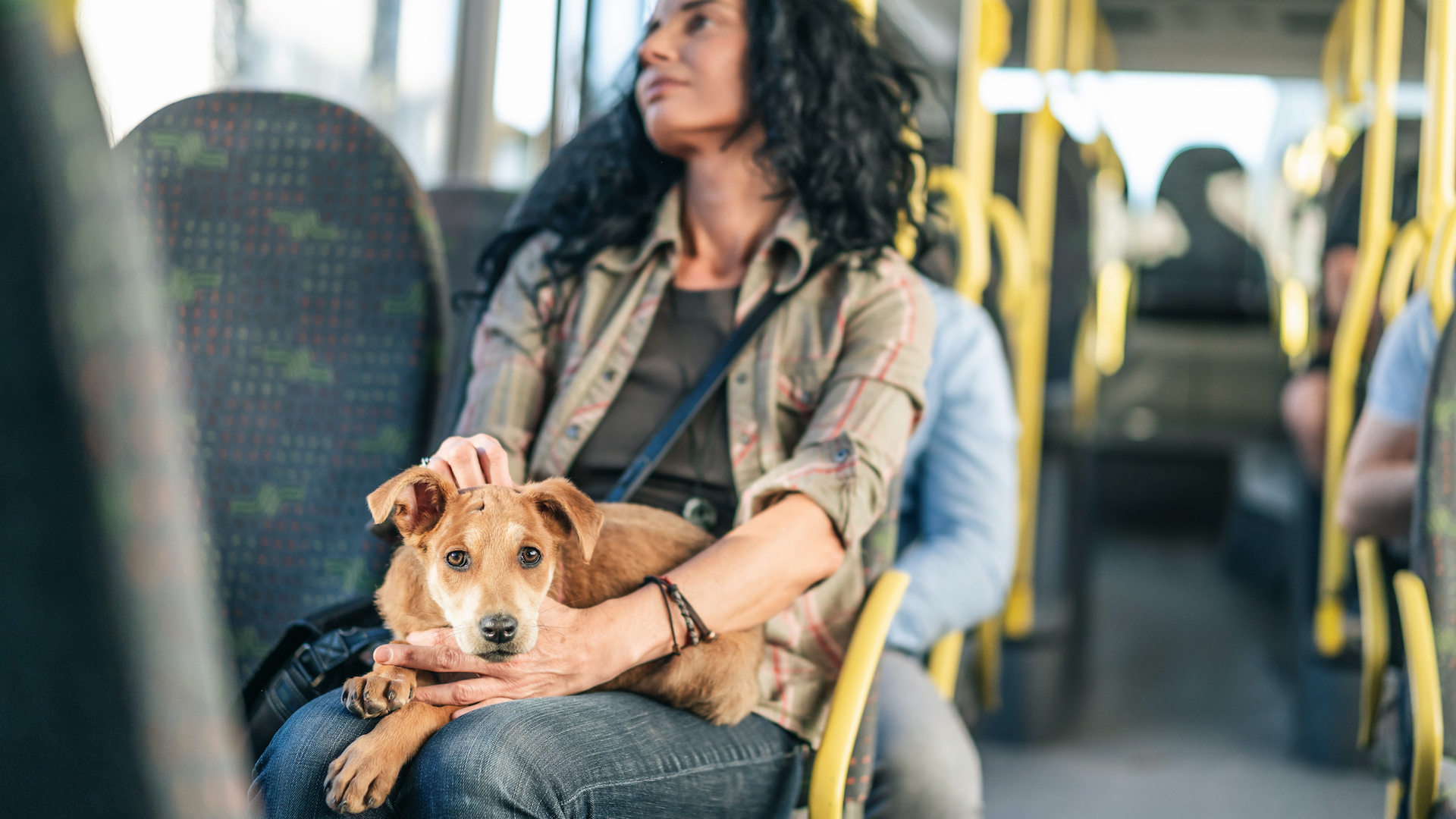
Unless you are planning to travel exclusively by your own car, check the pet policies on all modes of transport you want to use. For example, some taxis allow pets, some don’t. Many will charge an extra fee for cleaning.
Ferries often allow dogs, but they usually stay in the car on the vehicle deck or have a specific kennel area.
Airlines have specific regulations depending on whether it is a national or international flight, and so do trains, buses, and trams. Many require the pet to be crated, and some of these vary in rush hour, or according to the size of the pet.
15. Update contact information
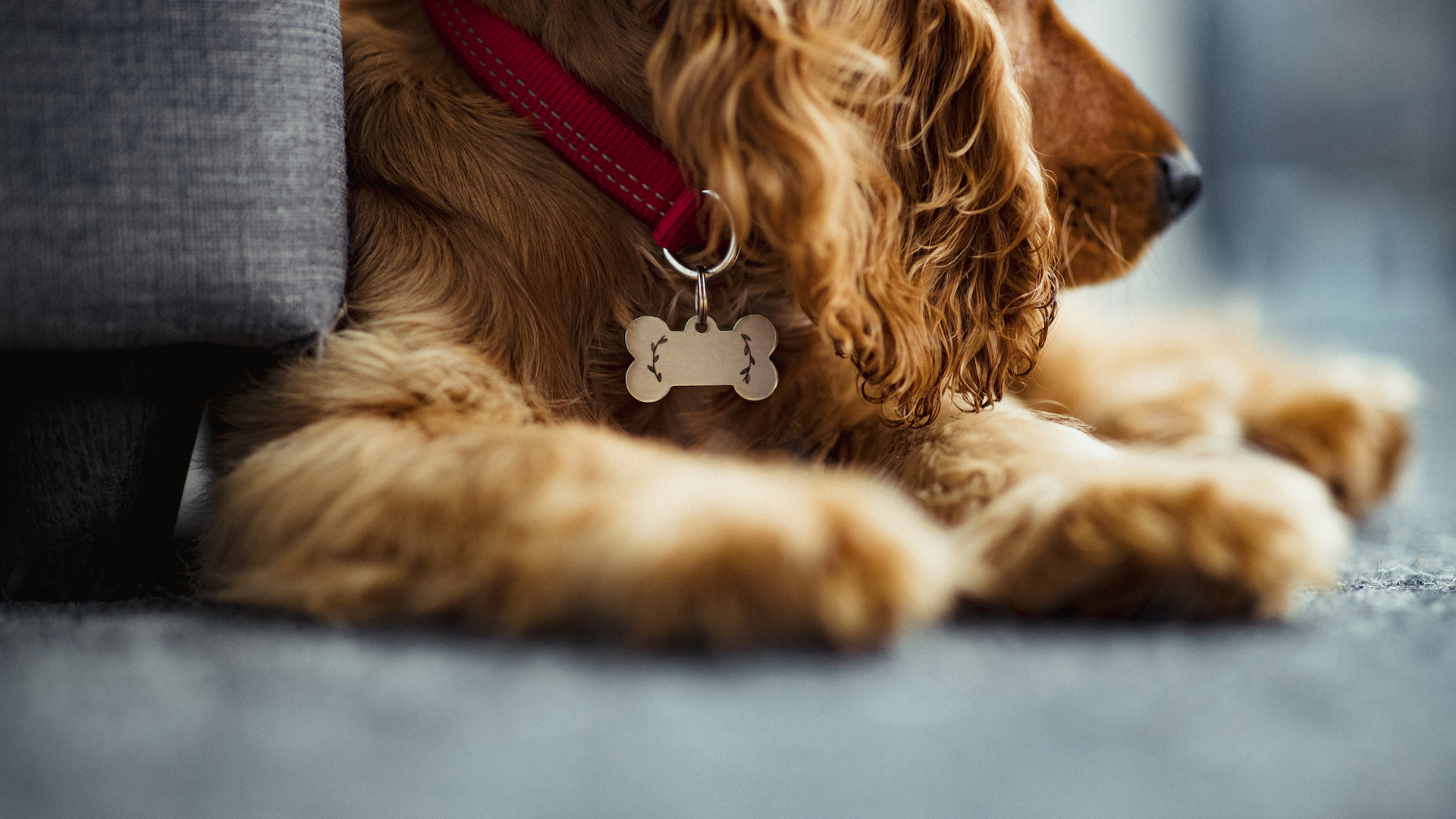
Have you checked that your pet’s microchip is correctly linked to your current address? Many owners never change it from the breeder to which it was originally registered.
Does your dog tag have your current phone number and address? Make sure these are all updated well in advance of your departure date to avoid any last-minute panic (or – at worst – your lost dog not being able to be reunited with you).
16. Research pet-friendly attractions
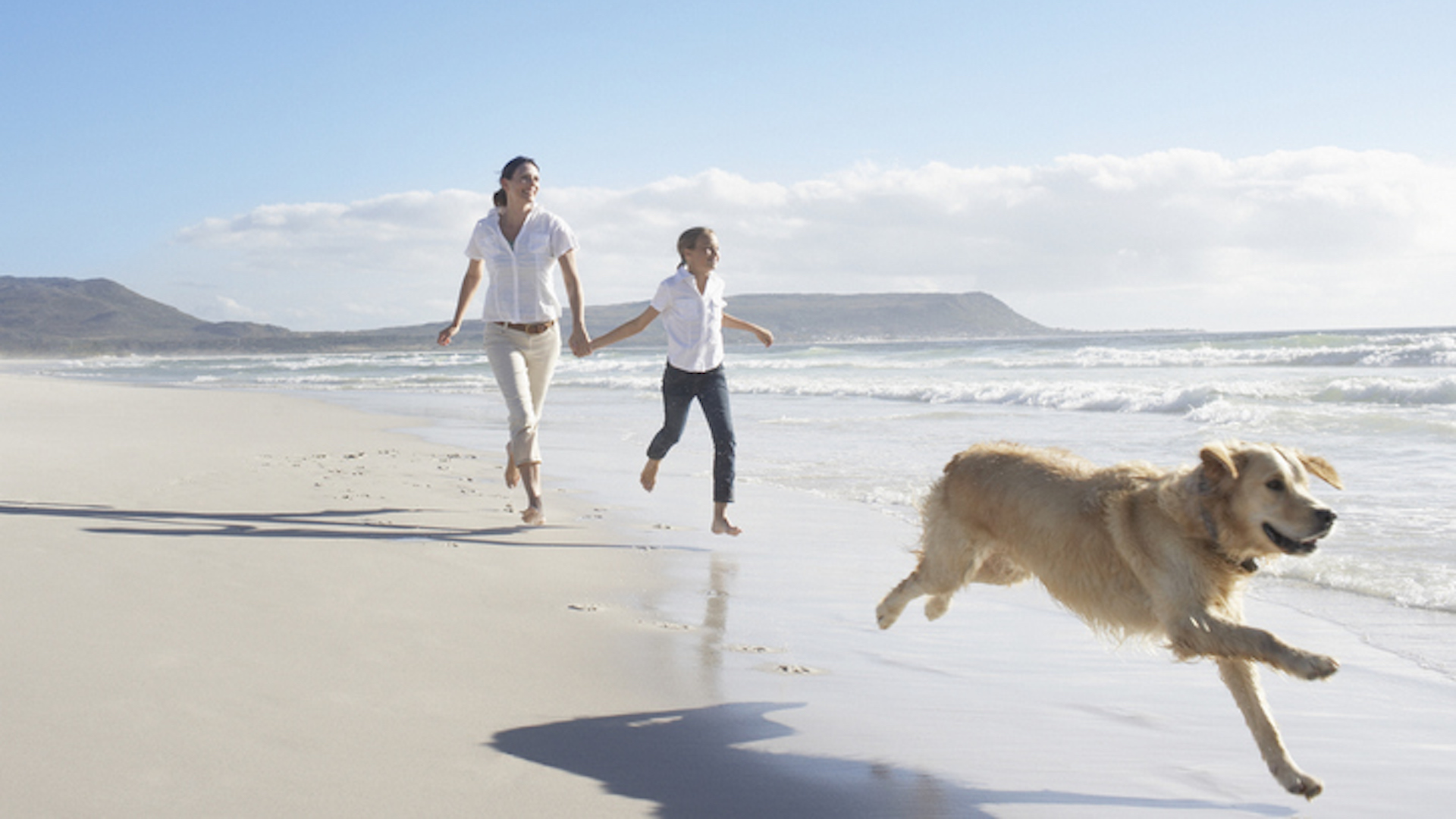
Not every place that humans want to visit is up your pet’s street. Furthermore, many attractions do not welcome dogs. This includes some areas that you might imagine would be perfect dog-walking territory, such as some national parks and beaches. Luckily, there are many options for the best places to take your pet on vacation to make things easier.
You shouldn’t leave your dog back at your accommodation all day, especially in an unfamiliar place, so always check while you are planning your adventures that your dog will be welcome to join you, and be aware that it will often have to be on a leash.
17. Stick to your pet’s routine
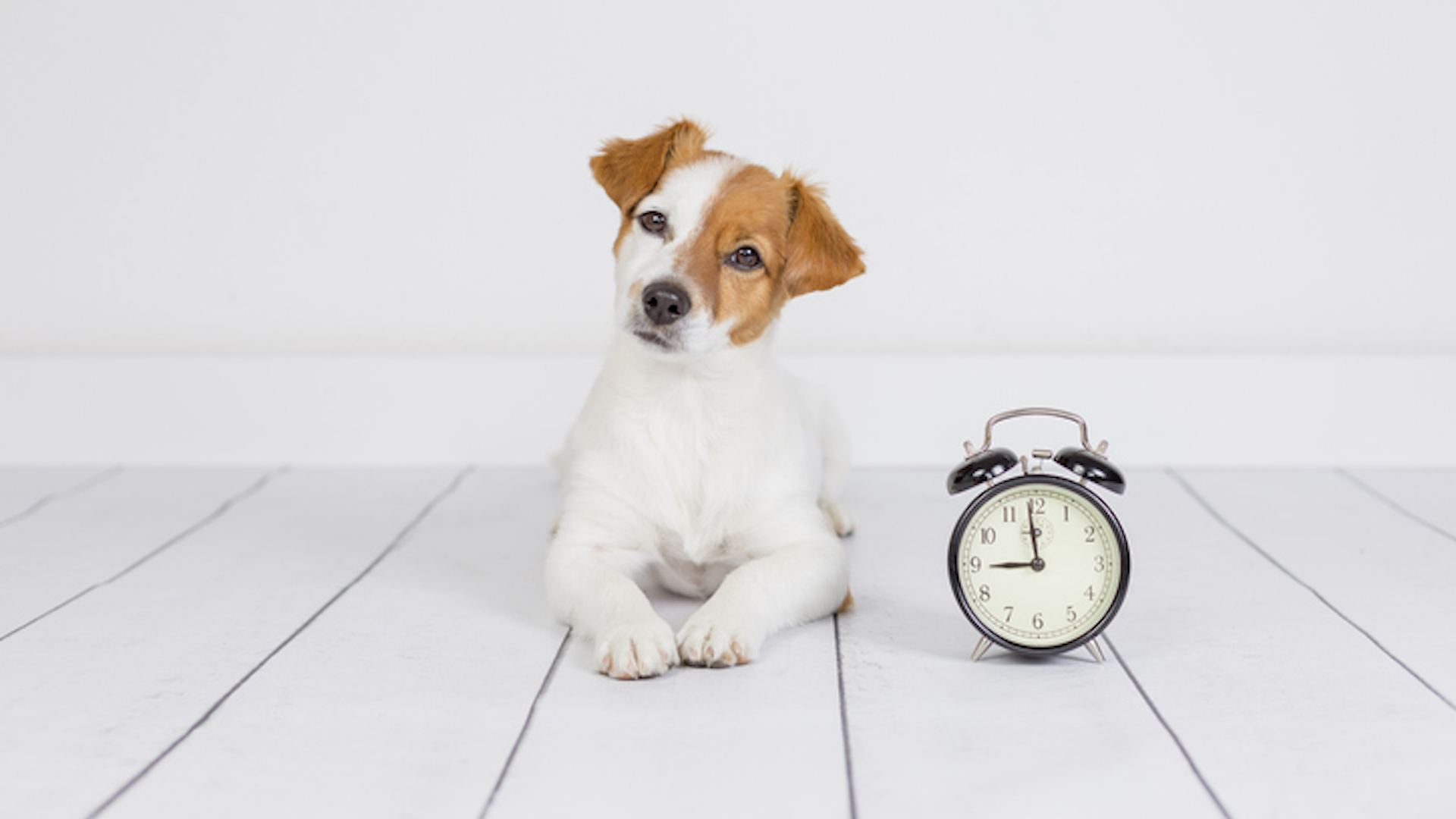
Long journeys often throw our routines out of whack, and that’s normal, but once you have arrived, try to get straight back into the normal schedule so that your pet knows what to expect and when.
He may be feeling very unsettled in the new environment, possibly a different climate, and feel out of sorts after long hours traveling, so getting back on track will help bring some order back into his life. Food, hydration, exercise, and sleep should help put him back on schedule.
18. Make your holiday accommodation pet-safe

The chances are that at home you have various barriers and locks to keep your pet in the right place – or at least a trained understanding that he sticks to certain areas (for example, not on the couch or up the stairs). But your temporary accommodation is unlikely to be rigged up exactly to suit your usual arrangements. Perhaps there’s easy access to a front door that opens out onto a busy road, or a balcony with bars wide enough for a pet to slip through.
When you arrive at the accommodation, go around and note all the potential danger areas, and work out how you can make them safe, for example by limiting the pet to a certain room or blocking an entrance.
19. Pack for comfort
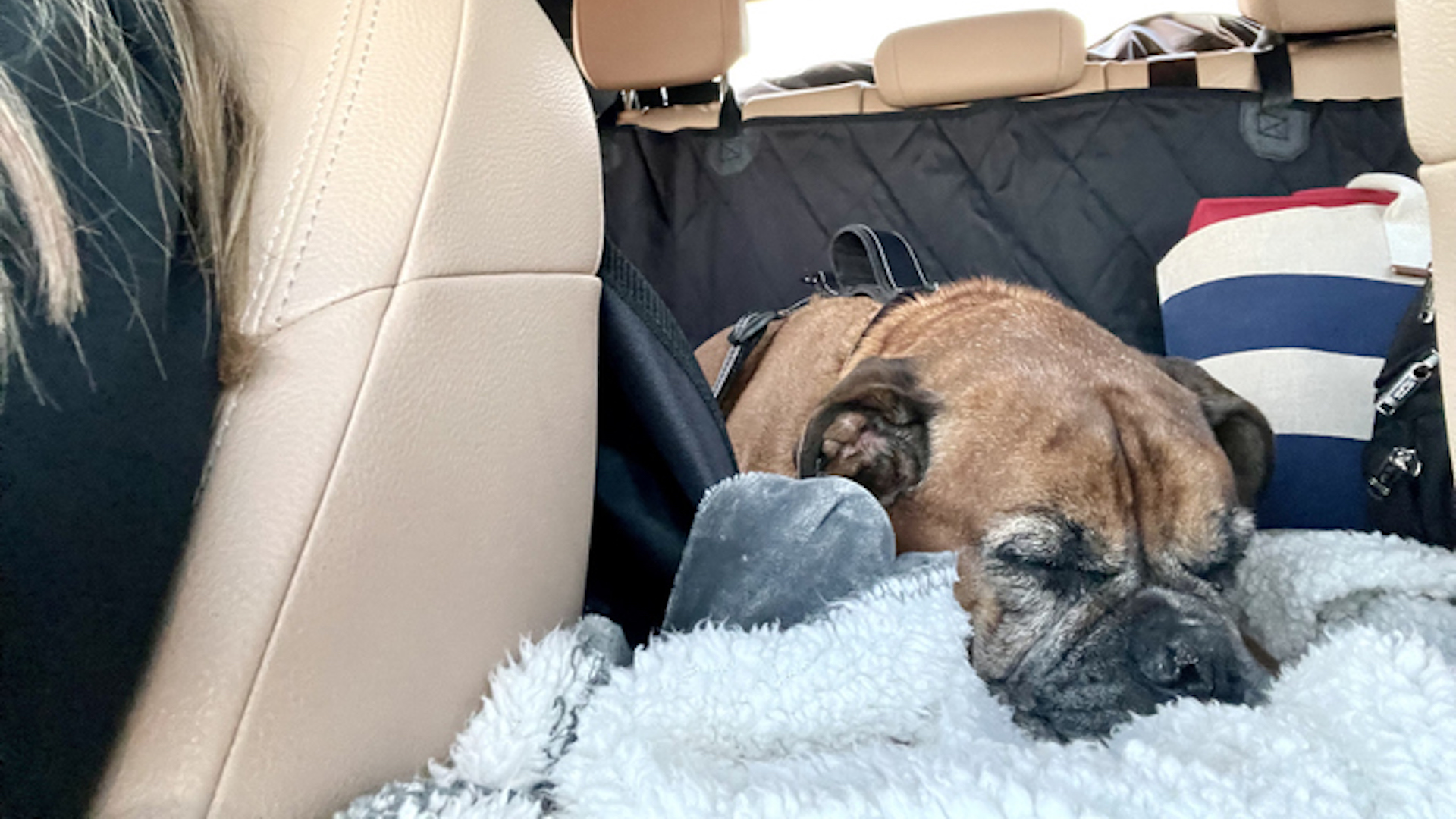
It can be tempting when trying to keep the baggage under a certain limit to leave luxuries behind. However, your dog will settle and sleep best if given a familiar and comfortable bed to rest on, it might be worth considering one of the best dog travel crates.
The floors may be hard, rather than carpeted, and travel crates are typically not padded – so make sure you have plenty of comfortable bedding. Likewise in the car, give him plenty of padding so that he is not stiff after a long journey with restricted movement.
20. Take grooming essentials
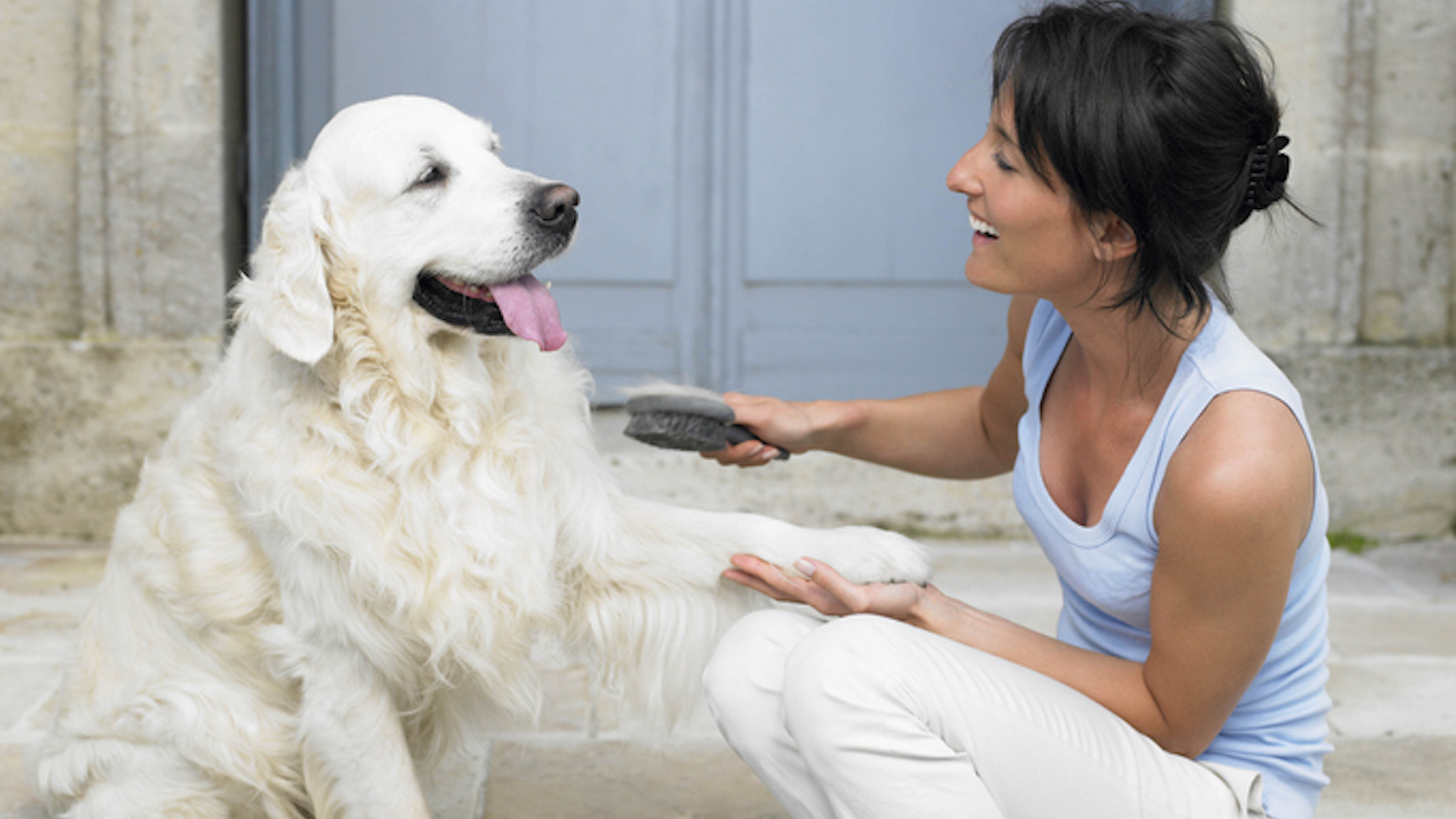
Grooming might not be top of your to-do list while on vacation, but you don’t want to find you need to use your own hairbrush to detangle mats out of your dog’s ears. Take a selection of grooming essentials so that you aren’t caught short. For instance, some dog shampoo in case he rolls in something foul-smelling, a comb to get rid of mats, and some of the best dog nail clippers.
And of course, don’t neglect their dental hygiene. Dogs’ teeth should be brushed daily, so take one of the best toothbrushes for dogs and toothpaste.
Another tip is some spare towels, as your accommodation provider will not thank you for using their towels to dry off your dog.
21. Cleaning equipment and poop bags

Unfortunately, accidents happen, especially in young and elderly pets. Any pet can make a mistake when they are in unfamiliar surroundings and are not sure where and when to do their business. More irritatingly, some pets – male dogs in particular – decide that a new place is a territory that needs to be marked, so be on the lookout for this as they will need close supervision. The American Kennel Club has advice on curbing the issue of dog marking.
Take cleaning equipment so that you can ensure your temporary accommodation is left smelling sweet and looking clean. And don’t forget the poop bags!
22. Hydration
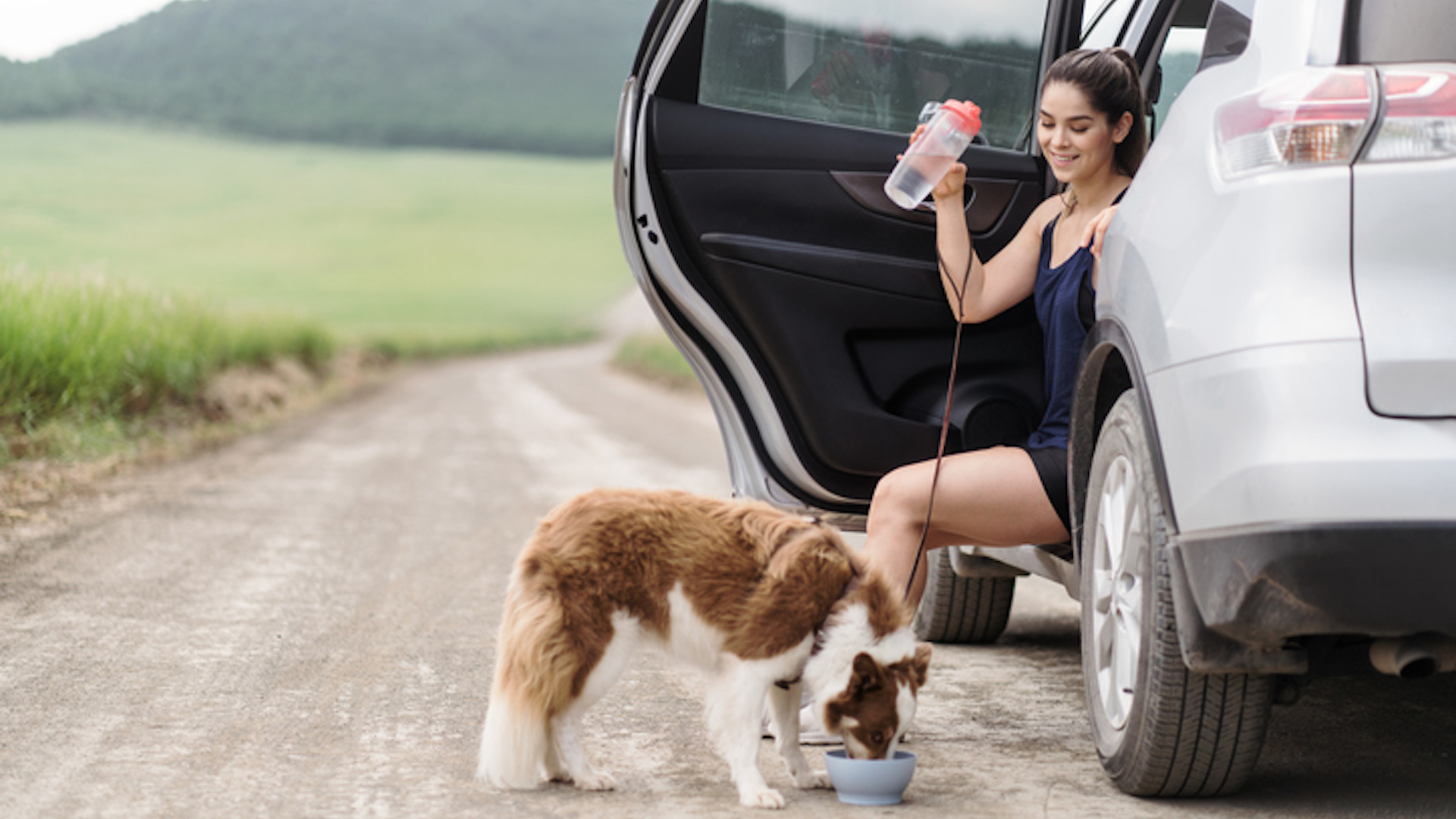
While it’s not advised to feed your pets while they are physically traveling, water is essential, so ideally have water available for them during the journey or offer it regularly. You can buy travel water bowls that don’t spill.
Dogs on average drink up to 1oz of water for every pound of bodyweight a day. Cats drink far less. So a 60lb Labrador will need up to five cups of water.
Without sufficient water, they will become dehydrated and prone to overheating. They are likely to require more water in hot weather than cold.
23. Research pet-friendly restaurants and cafes

It’s wonderful to run into a cafe for a cappuccino or a beer after a long walk. But check beforehand that dogs are allowed. Many do welcome dogs and even have a water bowl for hydration and treats to show they’re dog-friendly.
Fancier restaurants may not be so keen on dogs, and it may also depend on the size. A Chihuahua is less likely to cause a stir than a mastiff.
24. Prevent motion sickness
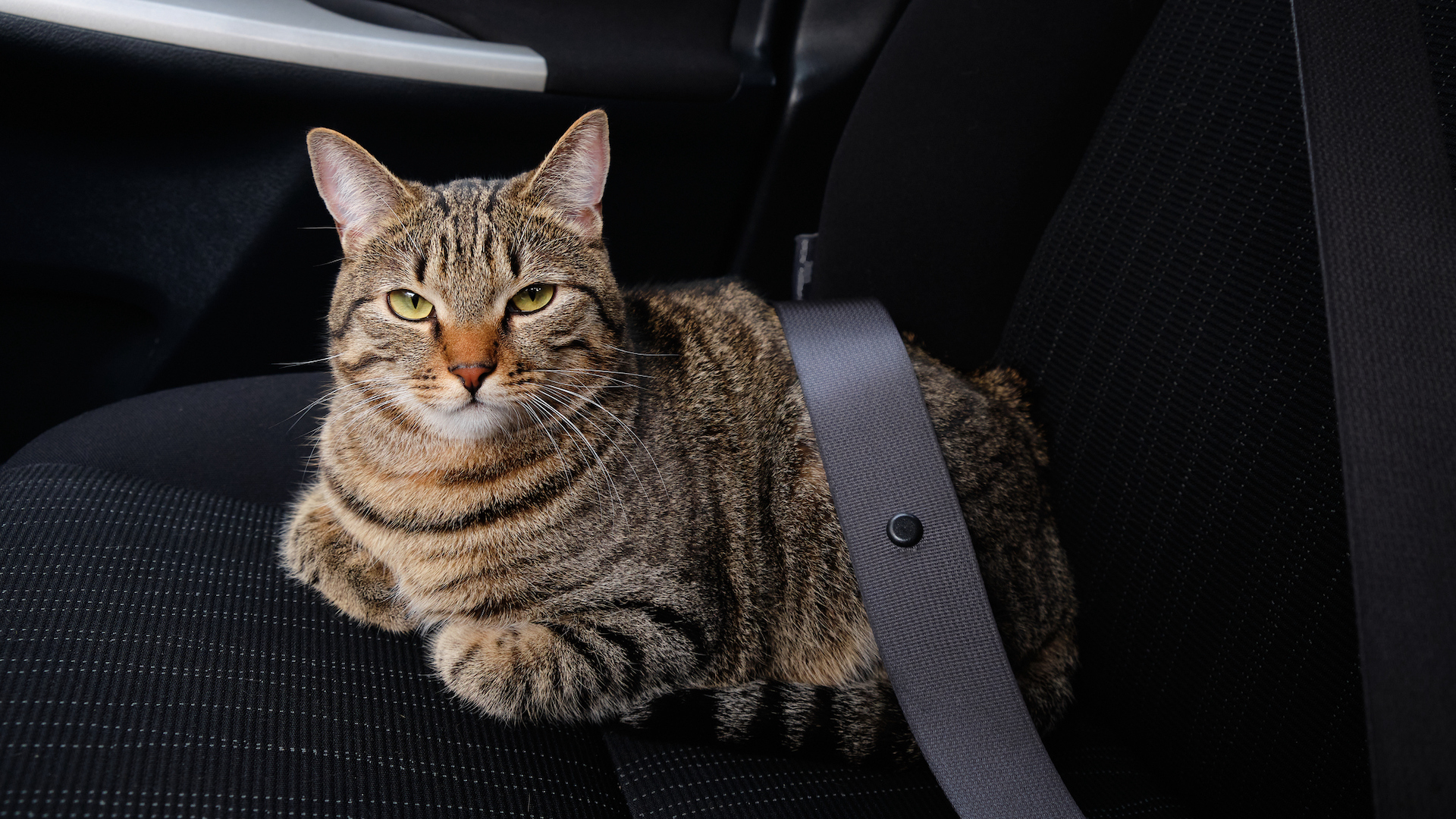
Many dogs suffer motion sickness, particularly younger ones, and they often grow out of it by the time they are a year old. You may be able to desensitize them by regular very short trips gradually building up.
Travel your dog on an empty stomach, as this will help reduce nausea. Supply water, and keep the temperature cool.
For cats, desensitization can be trickier, so may take longer to condition them, but the same goes – short trips building up, cool temperatures, and withholding food before a journey.
For both dogs and cats, there are also medications available for preventing motion sickness, so consult your vet to see what is recommended. Most sedatives are not permitted on airlines, so make sure you are aware of the regulations.
25. Sedation
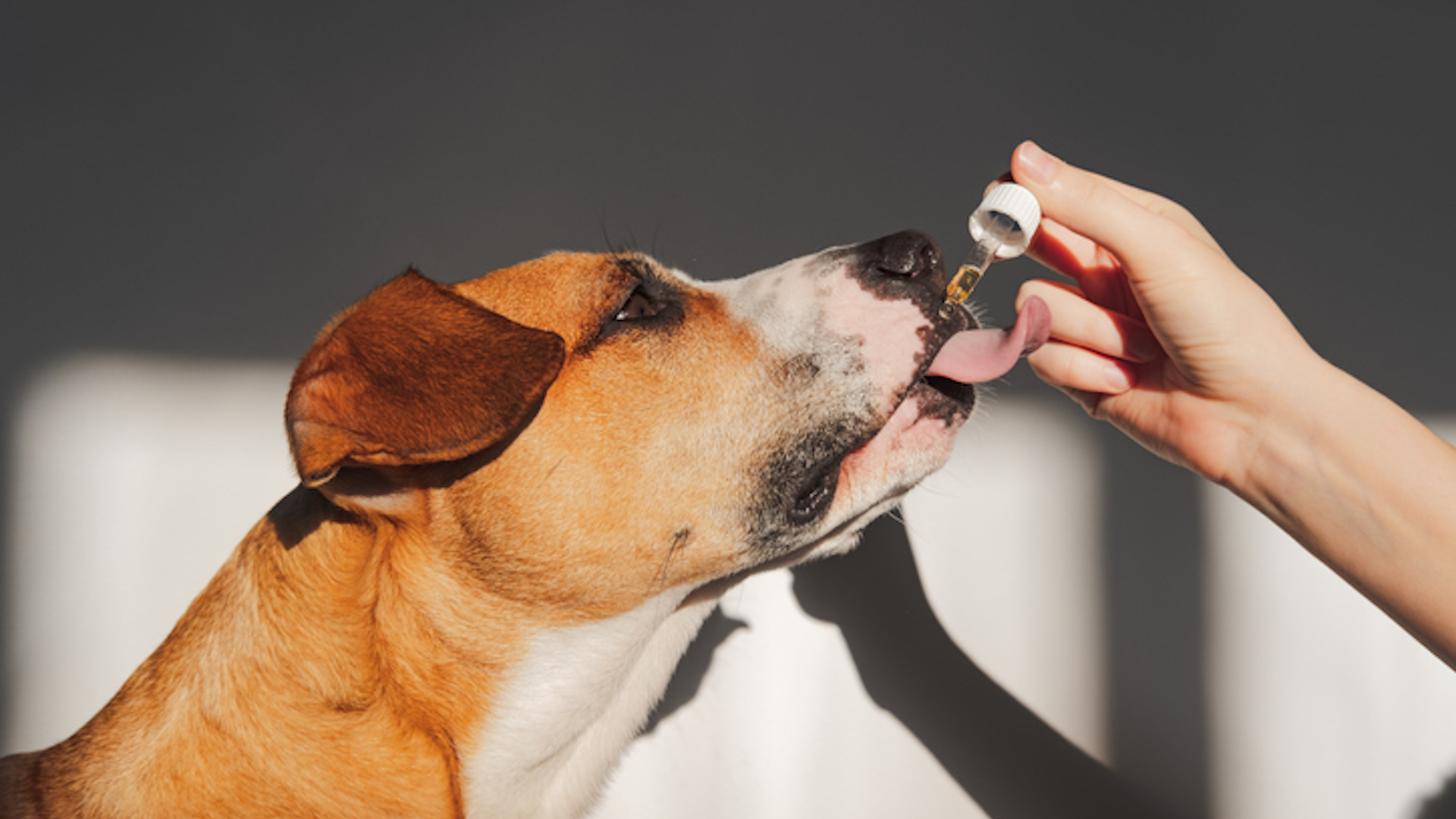
While it may be tempting to administer a sedative to your pet to enable them to sleep through the journey and reduce stress levels, the American Veterinary Association advises against this, and in fact, airline regulations usually prohibit it. This is because sedatives affect coordination and balance, which your pet may need during a bumpy ride.
However, tranquilization is an option because it reduces anxiety without causing drowsiness, so this may be considered in consultation with your vet.
26. Temperature control
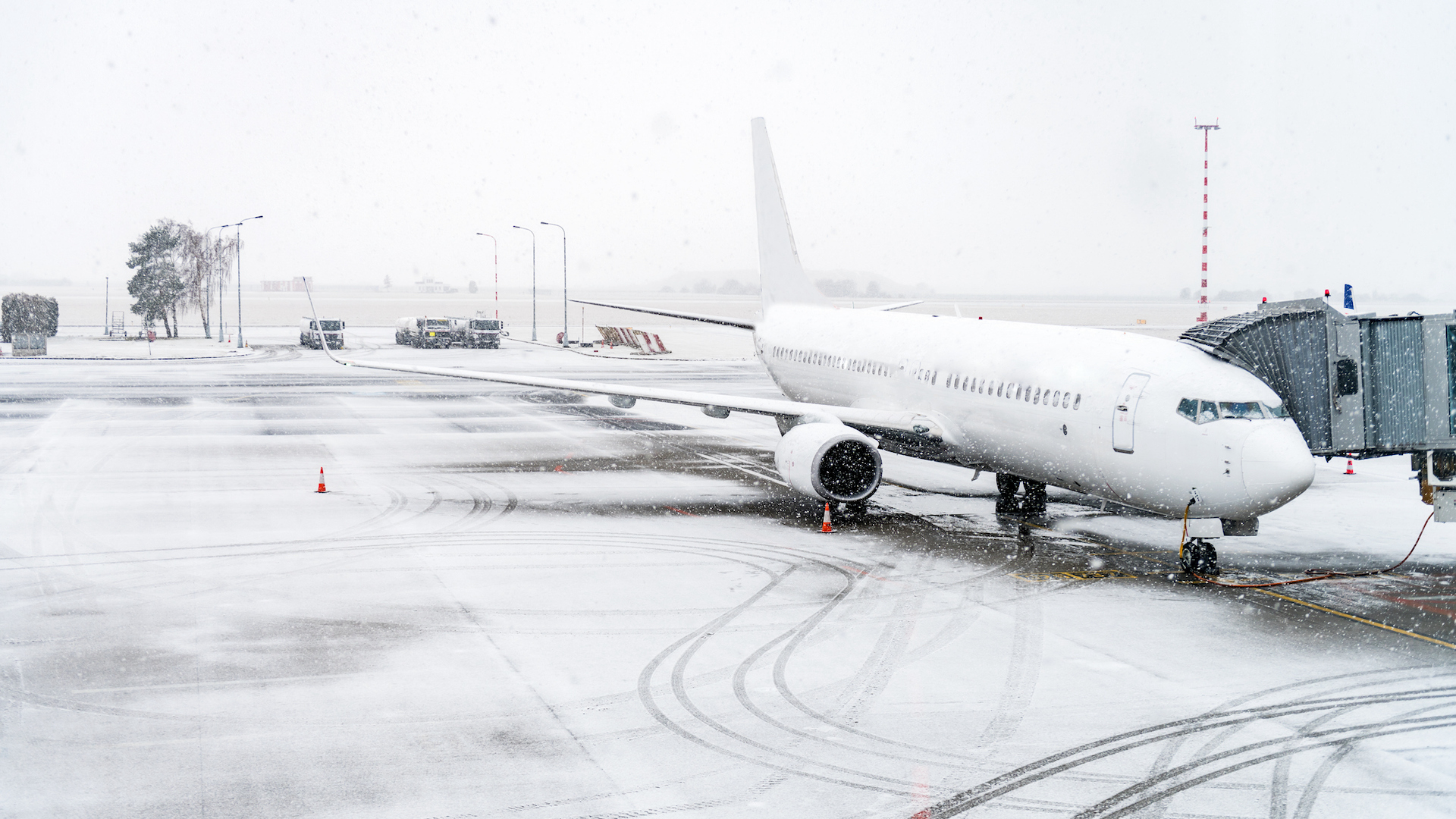
On flights, pets are not permitted to fly in very hot or very cold temperatures for the sake of their safety and wellbeing. This may affect your destination or the season in which you travel.
According to the United States Department of Agriculture, temperatures should not exceed 85ºF or be cooler than 45ºF for a period of more than four hours.
During travel in your own personal transport, keep the temperature relatively cool as this will help reduce stress levels and the chance of dehydration, both of which will make for an unpleasant and uncomfortable traveling experience for your pet.
Pets should never be left in cars, particularly in hot or sunny weather as the inside temperature can rise very quickly with fatal results.
27. Unfamiliar noises

As some pets are more anxious than others, you may find yours is scared of the unfamiliar noises in your temporary accommodation. Perhaps there are thunderstorms, a loud road nearby, or wildlife. The best way to help them deal with this is to distract them, often by playing with them, engaging them in one of the best dog puzzle toys, or their own squeaky toy that makes a familiar noise. Pack these sorts of distractions to bring out when you need them.
28. Research quarantine requirements

If you are crossing any international borders, check quarantine requirements months in advance. Many countries require your pet to have had specific vaccinations. The big one is rabies – some rabies-free countries, such as the UK, require vaccination and health checks in the 24-hours before traveling from certain countries, and compulsory quarantine from other countries regardless of vaccination status.
29. Respect other travelers
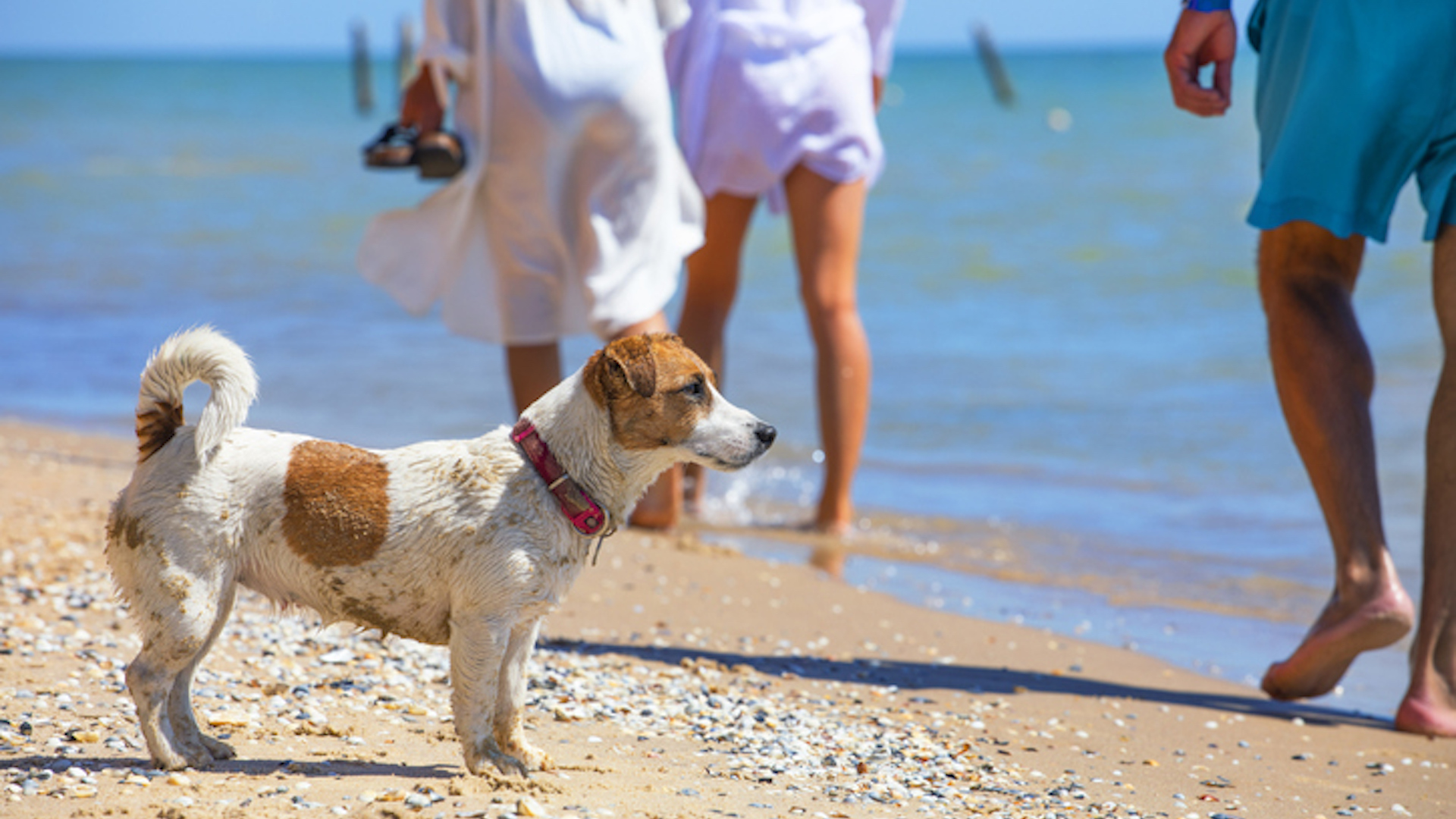
You clearly adore your pet, otherwise, why would you take the trouble to travel with them? However, as with small children, many other travelers do not feel the same way. Some will have boarded their pets so they can enjoy a vacation free of barking and dog poop!
So be respectful of their privacy and don’t let your pet encroach on their personal space. You should keep them on a leash whenever necessary, curb any barking and always clear up their poop.
30. Be patient and calm
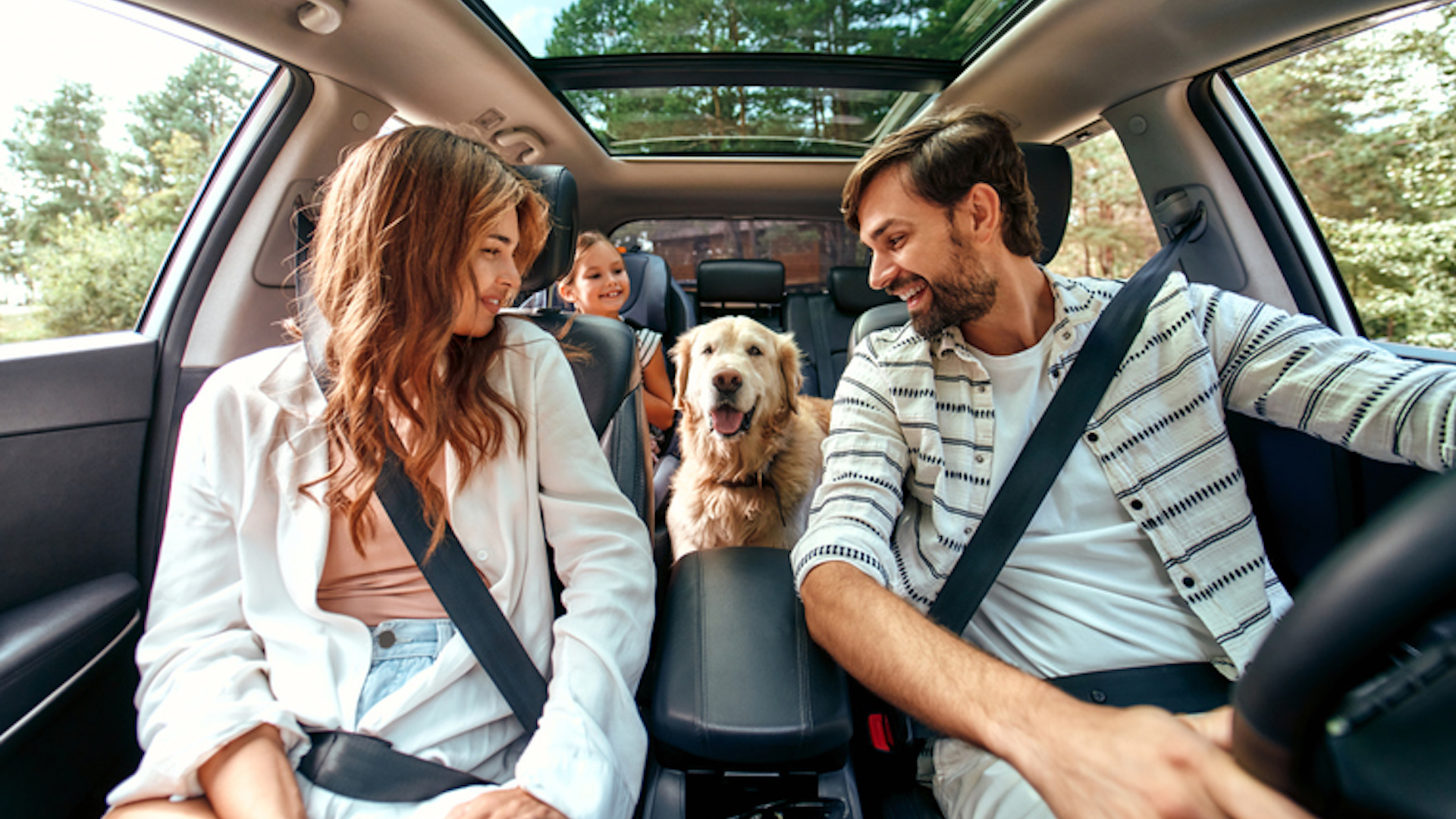
Traveling is stressful for everyone. But at least the humans know where they are going, and how long the journey should take. Pets are at the mercy of our decisions. They are likely to feel some level of stress during the journey, so help them to stay settled by being patient and calm yourself, and the vibes will comfort them. You’re in control, and they will draw on that.
31. Pet-friendly apps

There are stacks of great apps to help you plan your itinerary, where dogs are welcome, local emergency services, nearby dog walkers and even put you in contact with other pet owners who can give recommendations and support.
In the US, BringFido and BarkHappy are recommended for dog owners; while Rover is useful for both dog and cats.
32. Pre-travel exercise
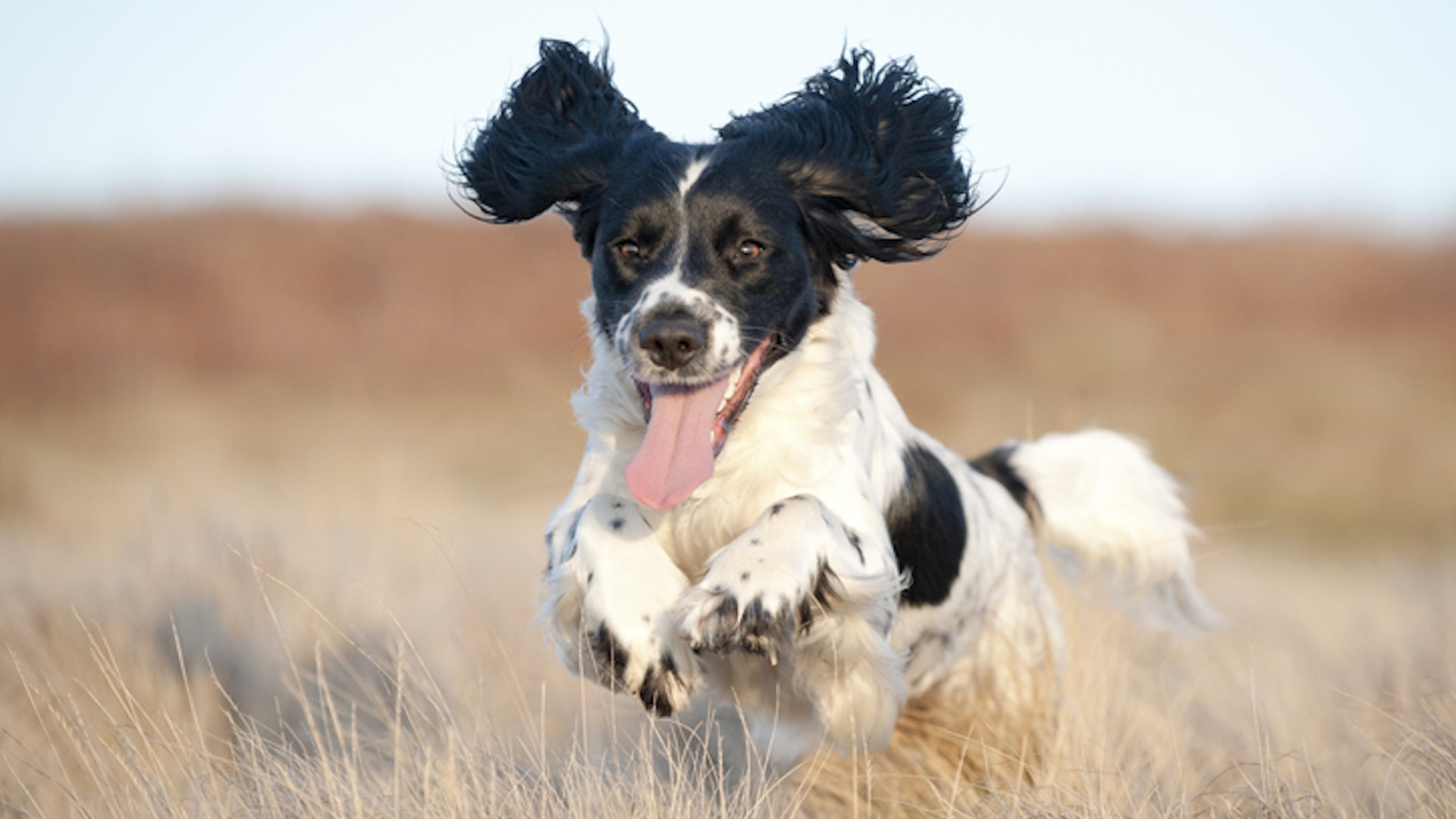
Give your dog plenty of exercise the day you travel so that he will be happy to lie down and enjoy the enforced resting period during the journey, especially if your dog is one of the high energy dog breeds.
Play with your cat, with one of the best automatic laser cat toys or other toys so that they have had sufficient stimulation.
You might also want to read what to pack for camping with your dog
Martha is an experienced journalist working in both print and digital media. She specializes in the canine, equine and rural sphere where she has covered a wide range of topics from cloning animals and the ingredients for a perfect yard dog, to helping owners find the best canine GPS trackers on the market. When she’s not busy writing about dogs and horses, she’ll be found either aboard a horse or looking after the menagerie of pets in her care.
